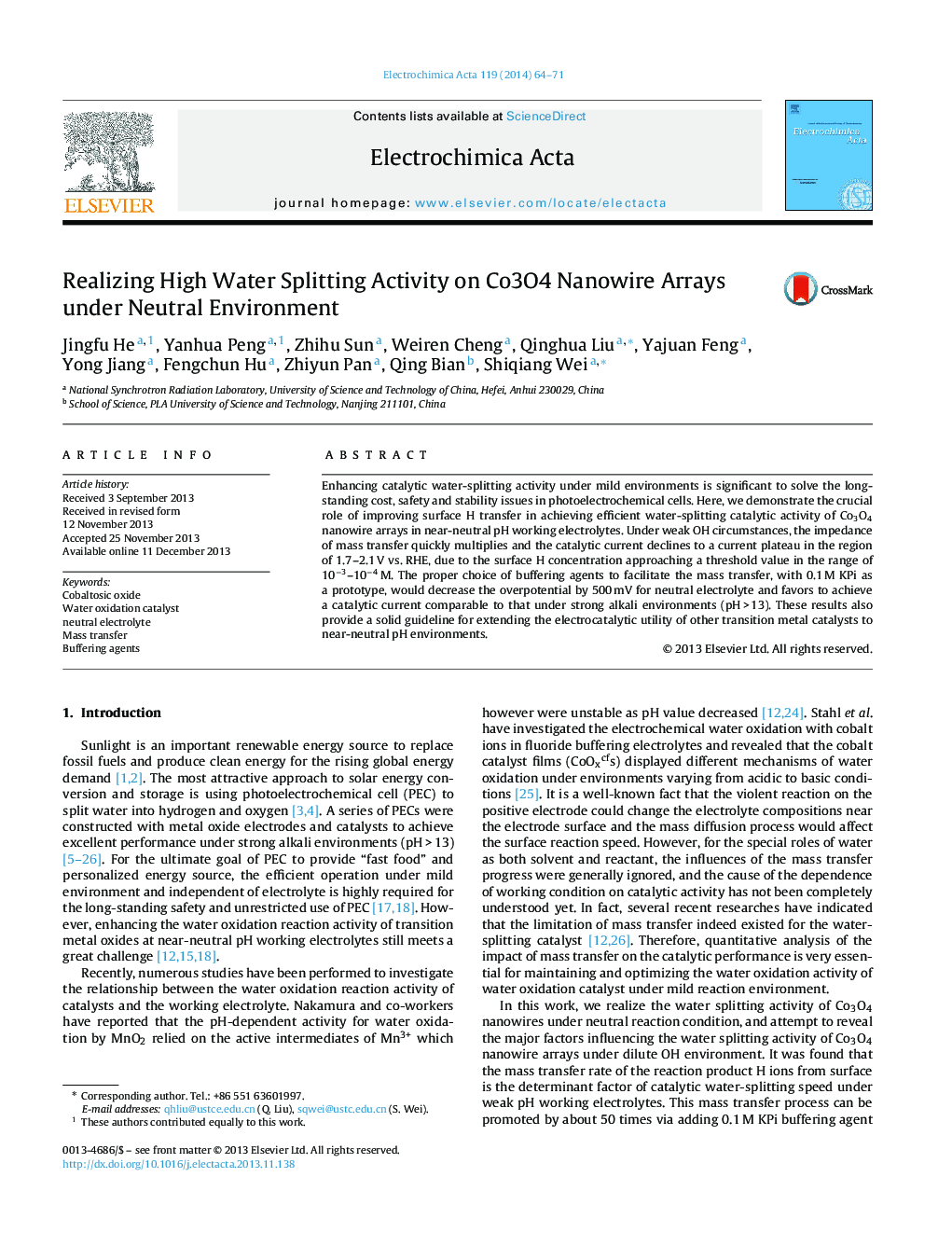| کد مقاله | کد نشریه | سال انتشار | مقاله انگلیسی | نسخه تمام متن |
|---|---|---|---|---|
| 186398 | 459613 | 2014 | 8 صفحه PDF | دانلود رایگان |

• We reveal the true determinant of catalytic rate of Co3O4 under near-neutral electrolytes.
• The catalysis process of Co3O4 is hindered by a threshold surface H+ concentration.
• The catalytic current density is limited by H+ mass transfer rate from electrode surface.
• Adding proper buffering agents would ensure the water splitting activity under pH 7-13.
Enhancing catalytic water-splitting activity under mild environments is significant to solve the long-standing cost, safety and stability issues in photoelectrochemical cells. Here, we demonstrate the crucial role of improving surface H transfer in achieving efficient water-splitting catalytic activity of Co3O4 nanowire arrays in near-neutral pH working electrolytes. Under weak OH circumstances, the impedance of mass transfer quickly multiplies and the catalytic current declines to a current plateau in the region of 1.7–2.1 V vs. RHE, due to the surface H concentration approaching a threshold value in the range of 10−3–10−4 M. The proper choice of buffering agents to facilitate the mass transfer, with 0.1 M KPi as a prototype, would decrease the overpotential by 500 mV for neutral electrolyte and favors to achieve a catalytic current comparable to that under strong alkali environments (pH > 13). These results also provide a solid guideline for extending the electrocatalytic utility of other transition metal catalysts to near-neutral pH environments.
Figure optionsDownload as PowerPoint slide
Journal: Electrochimica Acta - Volume 119, 10 February 2014, Pages 64–71